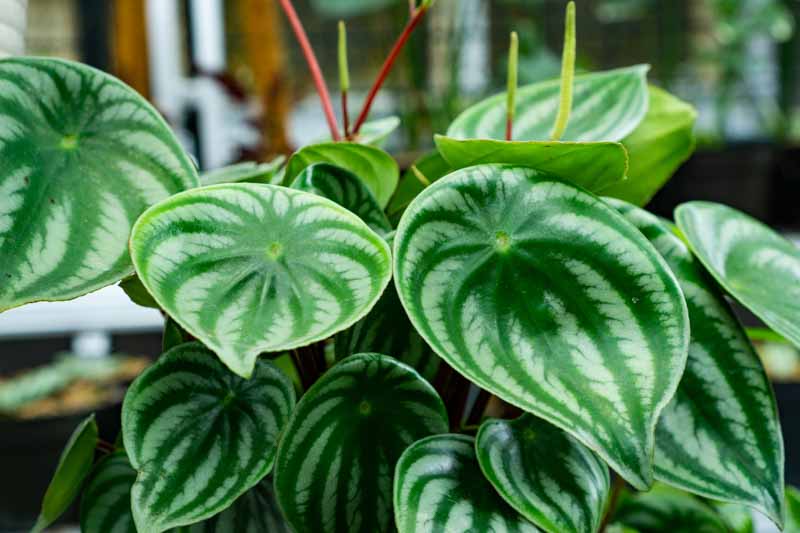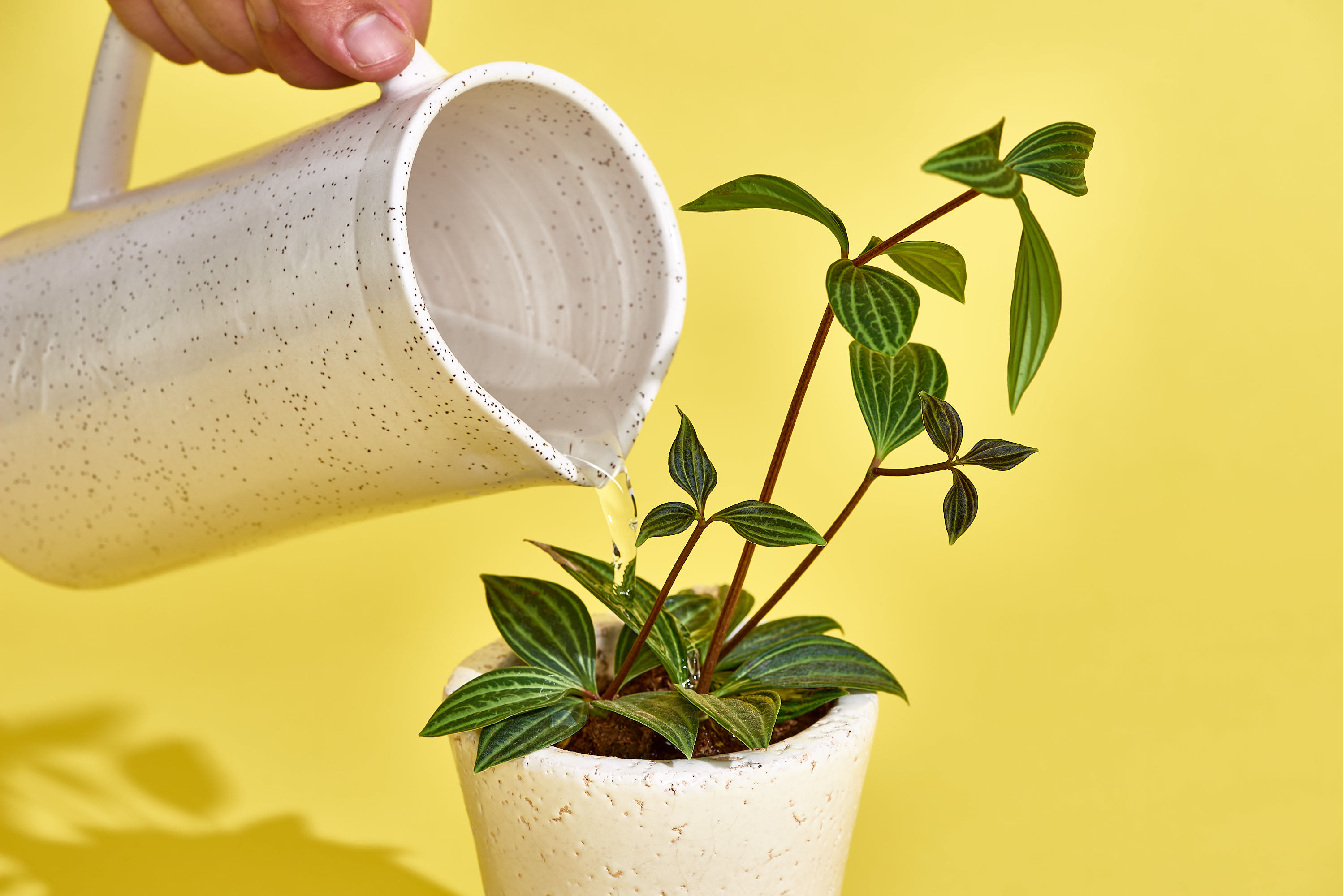If you’ve ever walked into DH Garden Centre in Kitsilano and found yourself captivated by the quirky, colorful, and compact plants lining the indoor shelves, chances are you’ve already met Peperomia. With over 1,000 species, these adaptable houseplants have won the hearts of many plant lovers across Vancouver—and for good reason.
In this comprehensive guide, I’ll walk you through everything you need to know to keep your Peperomia happy and thriving, especially in our unique West Coast climate. Whether you’re a seasoned indoor gardener or just starting your journey, this guide will help you understand how to choose, care for, and troubleshoot issues with your Peperomia.
What is a Peperomia Plant?
Peperomia is a genus of tropical and subtropical plants native mostly to Central and South America. While their flowers are not particularly eye-catching, their foliage is what sets them apart. Think deep ripples, silvery stripes, succulent leaves, and vibrant green shades.
Here at DH Garden Centre, we regularly stock popular species like:
- Peperomia argyreia (Watermelon Peperomia)

- Peperomia caperata (Emerald Ripple)
- Peperomia obtusifolia (Baby Rubber Plant)
- Peperomia scandens (Cupid Peperomia)
These species remain compact—usually under 30cm tall—making them ideal for small apartments, desks, shelves, and even terrariums.
Why Peperomia is Perfect for Vancouver Homes
1. Space-Saving:
Most Peperomias are slow-growing and compact, so they don’t need much room to thrive. Ideal for city living where space is a premium.
2. Low Maintenance:
Their semi-succulent nature makes them drought-tolerant. In our temperate coastal climate, where indoor humidity can fluctuate during the heating season, Peperomia still thrives.
3. Pet-Friendly:
For homes with pets, Peperomia is non-toxic to cats and dogs—a huge bonus for Vancouver families.
Light Requirements: Bright, Indirect is Best
Peperomia prefers bright, indirect light. In your Vancouver home, place your plant near an east- or west-facing window. Avoid harsh direct sun, especially during the summer, as it can scorch their delicate leaves.
If your plant starts to look “leggy” or stretched, that’s a sign it’s reaching for more light. Try moving it closer to the window or supplementing with a grow light during darker months.
Temperature & Humidity: Comfortable at Room Temperature
Ideal Temperature:
- Between 18°C and 26°C (65-80°F)
- Keep away from cold drafts and sudden temperature changes, especially near windows in winter.
Humidity:
While some online guides say Peperomia needs high humidity, this really depends on the species. Many types like Peperomia obtusifolia have thick, fleshy leaves and do well in average household humidity. However, if your home is particularly dry in winter, consider placing the pot on a pebble tray or using a humidifier.
Watering: The #1 Mistake to Avoid
Overwatering is the most common killer of Peperomia plants. As a general rule:
- Water only when the top 1-2 inches of soil are dry.
- Use the finger test: stick your finger into the soil. If it’s dry to the second knuckle, it’s time to water.

Signs of Overwatering:
- Yellowing leaves
- Wilting despite moist soil
- Mushy or blackened stems
- Root rot (smelly, soggy roots)
Signs of Underwatering:
- Wrinkled, drooping leaves
- Crispy tips
Use room-temperature water, and always empty the saucer after watering to prevent root rot.
Soil: Go for Light and Well-Draining
Peperomia thrives in aerated, quick-draining soil. A good mix you can find at DH Garden Centre or DIY is:
- 50% indoor potting mix
- 25% perlite
- 25% orchid bark or coarse sand
This mix helps prevent waterlogging and provides the airflow Peperomia roots love.
Fertilizing: Light Feeders
Peperomia plants are not heavy feeders, so fertilizing them every 4-6 weeks during the growing season (spring through early fall) is enough. Use a balanced 10-10-10 or 20-20-20 water-soluble fertilizer at half strength.
Avoid fertilizing in winter, when the plant enters dormancy. Over-fertilizing can lead to salt buildup and root damage.
Potting and Repotting
These plants like to be slightly root-bound. Repotting every 2-3 years is usually sufficient.
Signs It’s Time to Repot:
- Roots growing out of drainage holes
- Water runs straight through the pot
- Soil has compacted or broken down
Choose a pot no more than 1 inch larger in diameter than the current one, and always use one with drainage holes.
Pruning & Propagation
Pruning:
- Use clean, sharp scissors to remove dead or leggy growth.
- Trim to maintain compact shape and encourage bushiness.
Propagation:
Peperomia is one of the easiest houseplants to propagate. You can use:
- Leaf cuttings (cut a healthy leaf and plant the cut edge)
- Stem cuttings (cut below a node and root in water or soil)
Propagation works best in spring or early summer, when the plant is actively growing.
Common Issues and How to Fix Them
1. Yellowing Leaves
- Cause: Overwatering, too much sun, or nutrient imbalance
- Fix: Let soil dry, adjust light, reduce fertilizer
2. Wilting Leaves
- Cause: Either over- or underwatering
- Fix: Check soil moisture and drainage
3. Leaf Drop
- Cause: Stress from relocation, overwatering, or pests
- Fix: Stabilize care routine and inspect for bugs
4. Curling Leaves
- Cause: Pest infestation (like mealybugs) or calcium deficiency
- Fix: Treat pests with insecticidal soap; check pH and soil nutrients
Pest & Disease Management
Common Pests:
- Mealybugs: White cottony patches; treat with neem oil or insecticidal soap
- Spider mites: Webbing on leaves; increase humidity and spray with miticide
- Fungus gnats: Larvae feed on roots; let soil dry and top dress with sand
Common Diseases:
- Pythium root rot: Caused by soggy soil. Treat by pruning roots and repotting
- Leaf spot: Remove affected leaves, improve air circulation
Always isolate new or sick plants to prevent spread.
FAQs from Our Vancouver Customers
Q: Can I grow Peperomia in low light? A: Yes, some species tolerate low light, but growth may slow, and colors may fade. Best results come from bright, indirect light.
Q: Do I need to mist my Peperomia? A: It’s optional. Most species don’t need misting. If your home is very dry in winter, consider a pebble tray or humidifier.
Q: Are Peperomia good for offices? A: Absolutely! They handle fluorescent lighting well and don’t need frequent watering.
Final Thoughts from Darrell
After 25 years in the landscaping and plant world, I still find myself amazed by how much joy a small plant like Peperomia can bring. Whether you’re filling a bright windowsill, styling a shelf, or starting your indoor plant journey, Peperomia is a reliable, beautiful companion.
Come by DH Garden Centre in Kitsilano or browse our online shop to find the perfect Peperomia for your home. Our team is always ready to help you choose the right plant and walk you through care tips tailored to your space.
Let’s grow something beautiful together – one leaf at a time.
D&H Garden Centre LTD.
3742 West 10th Avenue, Vancouver, BC V6R 2G4
P: 604-929-7335
Website: dhgardencentre.com
Instagram: @dh.garden.centre
YouTube: The Plant Doctor Official

